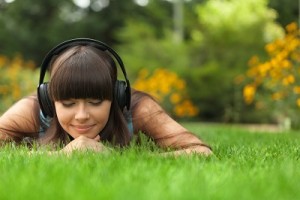- Calls to this hotline are currently being directed to Within Health, Fay or Eating Disorder Solutions
- Representatives are standing by 24/7 to help answer your questions
- All calls are confidential and HIPAA compliant
- There is no obligation or cost to call
- Eating Disorder Hope does not receive any commissions or fees dependent upon which provider you select
- Additional treatment providers are located on our directory or samhsa.gov
Music Therapy in the Treatment of Eating Disorders – Part Three
Contributor: Dean Quick, MT-BC, Program Director and Board Certified Music Therapist at TranscendED
See Part 1 Here.
See Part 2 Here.
Note: None of the interventions outlined in this series should be applied to your own healthcare/treatment without the direct consultation of a board certified music therapist (MT-BC). If you are interested in seeking music therapy treatment, you can find an MT-BC in your area by visiting www.musictherapy.org.
 In this third and final installment of this series, I would like to impart some strategies around using music in your life and in recovery. Music can be an integral part of your coping skills and can assist in relaxation and mindfulness, self-exploration, and self-expression.
In this third and final installment of this series, I would like to impart some strategies around using music in your life and in recovery. Music can be an integral part of your coping skills and can assist in relaxation and mindfulness, self-exploration, and self-expression.
If music isn’t a part of your life, I hope you will consider reevaluating the role it can play in assisting you in maintaining recovery.
Part Three
First, if you’ve made it through the other two parts of this series, thank you. It has been a privilege and a joy to write these pieces for EatingDisorderHope.com and hope that in it you have found a desire to strengthen your relationship with music.
I hope that any blurred lines around what is music therapy and what isn’t were clarified. I hope you enjoyed reading this as much as I have enjoyed writing it. I am very passionate about my profession and think every treatment facility for every patient population should have a board certified music therapist to support their clientele.
Let’s take a look at how you can independently use music in specific ways to assist in recovery.
Self-Guided Music-Assisted Relaxation
 In the previous part of this series, I mentioned music-assisted progressive muscle relaxation. That is the technique I will outline for your own use at home. It is not complicated and can be used in a number of settings, not just your home. This relaxation technique, like any other, works best in a quiet, comfortable, and dimly lit room that is free from distractions.
In the previous part of this series, I mentioned music-assisted progressive muscle relaxation. That is the technique I will outline for your own use at home. It is not complicated and can be used in a number of settings, not just your home. This relaxation technique, like any other, works best in a quiet, comfortable, and dimly lit room that is free from distractions.
Choosing Your Music
First, you want to choose your music. The music that works best is instrumental, predictable, and steady in tempo (speed). There shouldn’t be too many changes in volume and should include a small number of instruments (stringed instruments such as guitar are recommended).
All of this to say, choose music that YOU love and find relaxing…keeping in mind that the tempo should be steady. The music should be approximately 10-15 minutes in length with minimal changes in tracks.
Getting in a Comfortable Position
 You should get into a comfortable position either on your bed, on a mat, or in a chair. Focus on your breathing without changing it. Gradually deepen your breathing until you feel yourself sink into your bed/chair/mat.
You should get into a comfortable position either on your bed, on a mat, or in a chair. Focus on your breathing without changing it. Gradually deepen your breathing until you feel yourself sink into your bed/chair/mat.
Once you feel your body loosen a bit, tense the muscles in your right foot for approximately 5 seconds (or 4 beats of the music)…tighter…and release. [Pause for about 4 beats] Now tense your right calf muscles…tighter…and release. (You would continue this pattern until you’ve systematically gone through the entire body, focusing on each small muscle grouping.
Tensing and Releasing
It’s important to do this in tempo with the music. This will not only help maintain focus but also keep your pace consistent. For this to be effective, you should hold tension for the same amount of time for each part of the body. If this is something you are interested in learning more about, feel free to contact me and I will provide guidance around it for you.
Autobiography in Song
This self-explorative project melds lyric analysis, journaling, and visual arts techniques. This project is an opportunity for you to explore your past and present self through examining the music that has been with you throughout your life. The lyrics of the songs you choose for this project should be the driving force behind selecting the music to represent each section of this assignment.
- Stages of your life
- Adolescents
- Divide your life into 3 years stages and choose a song to represent each stage.
- Adults
- Divide your life into 5 years stages and choose a song to represent each stage.
- Support Persons
- Choose 3 people in your life who provide you with emotional support and find a song to represent each of these 3 people.
- Eating Disorder
- Choose a song to represent your eating disorder. Maybe the song is representative of how the eating disorder has affected you…maybe it’s the way you feel about your eating disorder…maybe it personifies your eating disorder
- Recovery
- Choose a song to represent your recovery. The lyrics of this song should convey your vision of recovery.
- Album Artwork
- Using any visual art medium, design an album cover to represent all the pieces of your life, either represented or not in the songs used.
Take your time with this project. In our treatment community here at TranscendED, the individual presents this project and I perform portions of the song while they talk about the meaning behind it for them. For you to independently do this, journal about what each of the songs mean to you and specifically why you chose it to represent parts of your life or people in your life.
Inventory of Recovery Music
 Take a personal inventory of the music that inspires you. Make a playlist of this music and keep it on your personal music playing device(s). The music should draw your attention away from symptom use, negative self-talk, and/or anxiety. It should take you on a journey.
Take a personal inventory of the music that inspires you. Make a playlist of this music and keep it on your personal music playing device(s). The music should draw your attention away from symptom use, negative self-talk, and/or anxiety. It should take you on a journey.
The playlist should begin with music that validates your present feelings and emotions. Each song should move closer toward the emotion/feeling you want to experience. Be creative with this. Analyze the music and take the experience seriously.
Take control of your experience. Jung said, “I am not what happened to me, I am what I choose to become.” (Jung, 1989) Choose music that meets you where you are in your process and above all, choose recovery. You are worth it.
Community Discussion – Share your thoughts here!
Have you created a playlist that you listen to specifically for your recovery? What types of music and songs inspire you the most?
The opinions and views of our guest contributors are shared to provide a broad perspective of eating disorders. These are not necessarily the views of Eating Disorder Hope, but an effort to offer discussion of various issues by different concerned individuals.
References:
- Jung, C., & Jaffe, A. (1989). Memories, dreams, reflections: Recorded and edited by Aniela Jaffe ;
translated from the German by Richard and Clara Winston. (Rev. [ie. 2nd] ed.). New York: Vintage.
Boilerplate:
Dean Quick, MT-BC is the Program Director and Board Certified Music Therapist for TranscendED where we understand the value of recovery, and believe that all individuals should have equal access to treatment. At TranscendED it is our goal to provide quality treatment, vigorous advocacy, multi-disciplinary education, and abundant support to those directly and indirectly affected by eating disorders. TranscendED is one of very few eating disorder treatment centers to accept Medicaid.
Last Updated & Reviewed By: Jacquelyn Ekern, MS, LPC on July 22nd, 2015
Published on EatingDisorderHope.com

